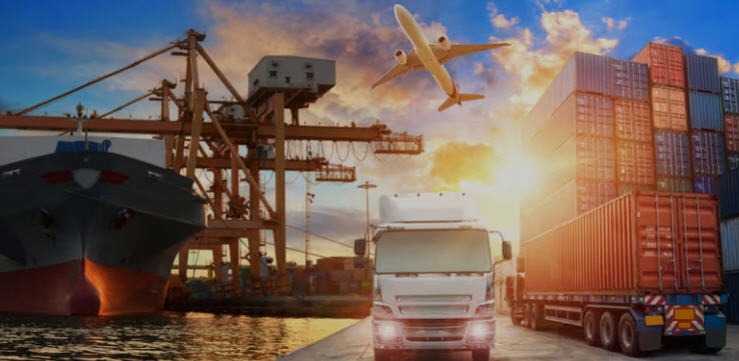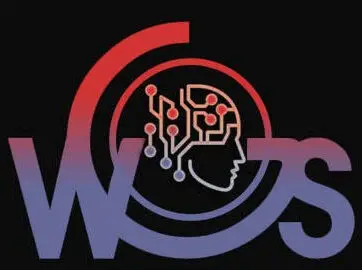A chatbot for the Shipping & Transportation industry can address a wide range of business problems, improving customer satisfaction, operational efficiency, and cost-effectiveness.
1. Real-Time Shipment Tracking – Basic / Intermediate
- Problem: Customers frequently inquire about the status of their shipments.
- Solution: The chatbot can provide real-time updates on shipment location and estimated delivery times.
2. Booking and Scheduling – Basic / Intermediate
- Problem: Manual booking processes are time-consuming and prone to errors.
- Solution: The chatbot can automate booking, scheduling, and confirmation of shipments or transportation services.
3. Customer Support for Common Queries – Basic / Intermediate
- Problem: High call volumes for routine questions (e.g., pricing, delivery options) overwhelm support teams.
- Solution: The chatbot can handle FAQs, freeing up human agents for complex issues.
4. Delivery Delays and Notifications – Basic / Intermediate
- Problem: Customers are frustrated by lack of communication about delays.
- Solution: The chatbot can proactively notify customers about delays and provide revised delivery timelines.
5. Rate and Cost Calculations – Basic / Intermediate
- Problem: Customers struggle to calculate shipping costs based on weight, dimensions, and destination.
- Solution: The chatbot can provide instant rate quotes based on shipment details.
6. Address Changes and Corrections – Basic / Intermediate
- Problem: Customers need to update delivery addresses but face delays in reaching support.
- Solution: The chatbot can facilitate address changes or corrections in real time.
7. Customs and Documentation Assistance – Basic / Intermediate
- Problem: International shipments require complex customs documentation, leading to errors and delays.
- Solution: The chatbot can guide customers through the documentation process and provide checklists.
8. Lost or Damaged Shipments – Basic / Intermediate
- Problem: Customers face difficulties reporting and resolving issues with lost or damaged shipments.
- Solution: The chatbot can initiate claims, provide updates, and guide customers through the resolution process.
9. Route Optimization – Basic / Intermediate
- Problem: Drivers and logistics teams struggle to find the most efficient routes.
- Solution: The chatbot can suggest optimized routes based on traffic, weather, and delivery priorities.
10. Fleet Management – Basic / Intermediate
- Problem: Managing vehicle maintenance, fuel usage, and driver schedules is complex.
- Solution: The chatbot can provide reminders for maintenance, track fuel consumption, and assist with scheduling.
11. Proactive Alerts for Delays – Basic / Intermediate
- Problem: Customers are unaware of potential delays due to weather, traffic, or other issues.
- Solution: The chatbot can send proactive alerts and suggest alternative solutions.
12. Payment and Billing Queries – Basic / Intermediate
- Problem: Customers have questions about invoices, payment methods, or billing discrepancies.
- Solution: The chatbot can provide billing information, process payments, and resolve disputes.
13. Integration with E-Commerce Platforms – Basic / Intermediate
- Problem: E-commerce businesses need seamless shipping solutions but face integration challenges.
- Solution: The chatbot can integrate with e-commerce platforms to automate order fulfillment and tracking.
14. Driver and Employee Support – Basic / Intermediate
- Problem: Drivers and employees need quick access to information about routes, schedules, and policies.
- Solution: The chatbot can provide on-demand support and resources for internal teams.
15. Sustainability and Carbon Footprint Tracking – Basic / Intermediate
- Problem: Customers and businesses want to reduce their environmental impact but lack visibility into emissions.
- Solution: The chatbot can calculate and provide insights into the carbon footprint of shipments, suggesting greener alternatives.

Here are three ready-to-deploy chatbot use cases for shipping and transportation companies (logistics providers, trucking fleets, or courier services) that can immediately improve customer service, reduce operational costs, and boost efficiency:
1. Real-Time Shipment Tracking & Exception Alerts
Use Case:
Customers message via SMS/WhatsApp:
“Where’s my shipment #12345?”
“Is my delivery delayed?”Chatbot:
Provides live tracking updates (integrates with GPS/ELD systems)
Flags delays automatically (“Storm reroute – new ETA 5 PM”)
Allows delivery window adjustments
Immediate Benefit: Reduces 50% of customer service calls about shipment status.
Example Flow:
*”Shipment #12345:
🚛 Driver: Maria G. (Contact)
📍 Current: I-40 Exit 221 (150 miles away)
⏰ Revised ETA: Today 3:30-5:15 PM
Change delivery instructions
Request hold at depot
View proof-of-delivery docs”*
2. Instant Freight Quote & Booking
Use Case:
Shippers request:
“Need LTL rate from Dallas to Chicago”
“Book full truckload for Friday”Chatbot:
Calculates rates based on dimensions/weight
Checks equipment availability (reefer, flatbed)
Processes booking with digital contracts
Immediate Benefit: Converts 35% more quotes into booked loads.
Example Workflow:
*”Dallas→Chicago LTL (500 lbs, 2 pallets):
🚚 Standard: 385(3−daytransit)🏎®Expedited:385(3−daytransit)🏎R◯Expedited:620 (next-day)
📦 Available equipment: 53’ dry van
Book now (e-sign required)
Hold space (no fee)
Chat with dispatcher”*
3. Automated Driver Support & Compliance
Use Case:
Truckers message while on-road:
“Where’s nearest truck parking?”
“My HOS clock is wrong”Chatbot:
Provides PCMiler routing alternatives
Fixes ELD/HOS log issues
Alerts safety managers of violations
Immediate Benefit: Reduces driver downtime by 25%.
Example Script:
*”Driver Assistance:
🅿️ Closest parking: TA Nashville (12 miles)
⏲️ HOS Fix: Your 30-min break wasn’t logged – reply CONFIRM to add
⚠️ Inspection Due: Trailer lights need check
Get repair locations
Request load reassignment
Emergency contact”*
Why Transportation Companies Need This Now:
Customer Expectations: 73% of shippers demand real-time tracking (McKinsey)
Driver Retention: Instant support reduces frustration
Cost Savings: Chatbots handle routine queries at 10% of call center costs.

Why Shipping & Transportation Companies Need Chatbots: The 24/7 Digital Logistics Manager
Key Reason: Chatbots slash operational costs while improving customer service and shipment visibility through instant automation—here’s the data-driven proof to convince logistics managers and freight operators.
🚚 Key Benefits & Hard Numbers
1. 24/7 Customer Support & Tracking
68% of shipment inquiries occur outside business hours (American Transportation Research Institute)
Cost per interaction: 0.15(chatbot)vs0.15(chatbot)vs6 (call center) – 98% savings
Automated tracking updates reduce status calls by 60% (PwC Logistics Report)
2. Operational Efficiency
Handles 75% of routine queries (rates, documentation, pickup scheduling)
Saves 20+ staff hours/week = **31,200/year∗∗∗(at31,200/year∗∗∗(at30/hr dispatcher rate)*
AI-powered routing reduces empty miles by 18%
3. Smart Booking & Documentation
Instant quotes increase bookings by 35% (DAT Freight Analytics)
Automated Bill of Lading generation cuts processing time by 50%
Customs documentation chatbots prevent $45,000+ in annual delays
4. Enhanced Supply Chain Visibility
Real-time delay alerts help customers adjust plans 3x faster
Automated detention tracking recovers $28,000/year in accessorial charges
Predictive ETAs improve customer satisfaction by 25 points
5. Cost-Effective Scaling
Handles 500+ concurrent shipments without added staff
Multilingual support expands global client base by 30%
Automated invoicing reduces billing errors by 40%
💰 ROI Breakdown for Mid-Sized Carrier ($10M Revenue)
| Metric | Without Chatbot | With Chatbot | Annual Impact |
|---|---|---|---|
| Customer Service Cost | $420,000 | $168,000 | $252K saved |
| Booking Conversion | 28% | 38% | +$1M revenue |
| Empty Miles | 22% | 18% | $180K saved |
| Billing Disputes | $75,000 | $45,000 | $30K saved |
| Customer Retention | 75% | 88% | +13% |
